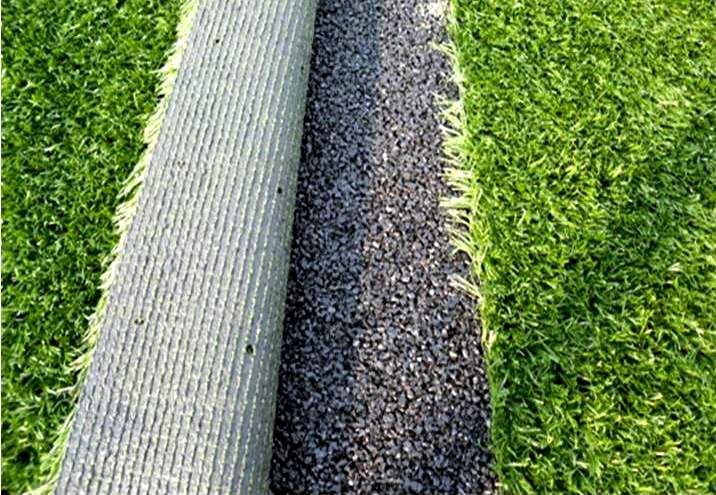
Your neighbour’s lush green grass lawn has a long pedigree. Grass turf lawns have been a feature of Canadian and American homes since the earliest colonies laid down roots in an otherwise wild landscape. Back then, rock gardens were effectively an oxymoron and artificial grass was a subject fit only for medieval science fiction fans. At first, the well-tended “English lawn” was a symbol of the aristocracy, but the natural grass turf lawn became more popular as society urbanized behind their urban and suburban picket fences. In Europe, green, pastoral lawns have been the preferred aesthetic since at least the 1600s (With the lawn mower not invented yet, it fell largely to rabbits, sheep and horses to keep the green space maintained at a uniform short height perfect for comfortable strolls around the home).
Today, we’re seeing alternatives popping up in the form of rock gardens and artificial grass. The new look for lawns is partly driven by poorly informed folks who are trying (and failing) to be environmentally friendly; partly, it’s part of a worrying trend of pure laziness. Either way, these trends are not good for the environment or your own health!
Grass is a green plant; green plants soak up natural and pollution-based carbon and produce fresh oxygen that all living creatures breathe. These are facts that any grade schooler can recite with little prompting. Aside from those environmental benefits, grass turf helps retain and drain water efficiently, reducing topsoil erosion and keeping any given plot of land from turning into a desert. They also produce habitats helpful for small insects and wildlife that are trying to thrive in cities otherwise dominated by sidewalks, roads and buildings.
In contrast, none of the benefits of grass turf lawns apply for rock gardens and artificial grass. Rocks and plastic don’t help the environment – they’re inert, preventing the ground under your feet from doing its job helping out Mother Nature.
Environmentalists will point out that rock gardens and artificial grass can make sense for parched parts of the country, like Arizona or inland California, or some desert-like parts of Western Canada, where water is scarce. That’s true. Watering a lawn in a place that gets not much more rain than Death Valley doesn’t do good things for the local water table. But for the wet west coast, covering Vancouver Island to the Lower Mainland and into the BC interior, getting enough rain is never a problem. Many parts of Alberta likewise have far more to fear from flooding than drought. Lush green grass turf lawns in wet areas don’t hurt the environment – they help it.
Watering, laying down fertilizer, aeration and mowing a natural grass turf lawn takes a bit of work. Unfortunately, an increasingly common myth is that the alternatives don’t require any maintenance.
For North Americans who might prefer extra time on the X-Box instead of the back yard, that can seem tempting. After all, rocks take millions of years to degrade and we can say the same thing in theory for synthetic artificial turf. But that bit about not needing to do maintenance just isn’t true.
Rock gardens still get weeds – and it can be a real pain spotting and pulling out weeds from among rock and gravel. Organic matter like dead leaves and seeds will eventually find their way in – and then it’s a real chore to get out the weeds when they appear, even with a spade.
As for artificial turf, while it can be a decent option for sports fields in bone-dry places like Arizona, for homes it can be a real nightmare. Organic matter breaks down on its own in natural grass turf lawns – but with artificial turf, you’re going to have a terrible time trying to clean off everything from mud and twigs to chewing gum and cigarette butts that can pile up over time thanks to guests, unruly neighbours and mother nature just kicking up junk. Snow and ice in winter can also damage artificial turf, creating unsightly patches that are only going to get worse – unlike natural grass turf, the plastic doesn’t repair itself by growing back.
In the contest between natural grass sod for your lawn versus rock gardens and artificial turf, there really is no contest. Get a natural grass lawn that’s quick and easy to install, simple to maintain and great for the environment.
Order fresh sod now or request a custom quote for your project.
Save with a Yearly membership. Custom fertilizer program. Fertilizer, topsoil, seed delivered to your door before you need it. Don’t forget, we will remember for you!
Western Turf Farms Abbotsford
39183 No.5 Road Abbotsford, BC V3G 2G3
Western Turf Farms Langley
7880 240 Street Langley, BC V1M 3P9
© Copyright 2025, all rights reserved by Western Turf Farms. By using our website you agree to our Disclaimer and Privacy Policy.